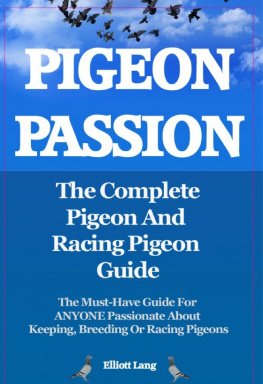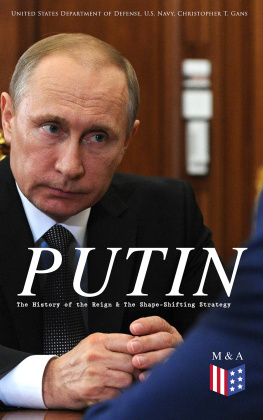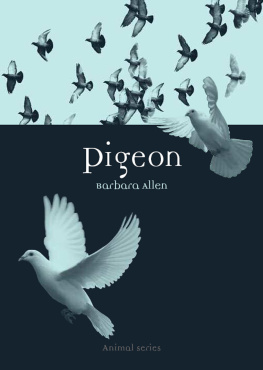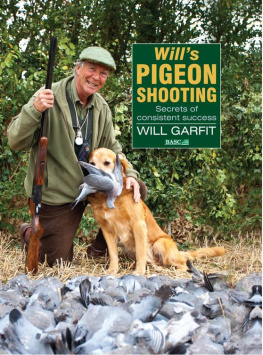United States. War Department - The Homing Pigeon
Here you can read online United States. War Department - The Homing Pigeon full text of the book (entire story) in english for free. Download pdf and epub, get meaning, cover and reviews about this ebook. year: 2019, publisher: Good Press, genre: Romance novel. Description of the work, (preface) as well as reviews are available. Best literature library LitArk.com created for fans of good reading and offers a wide selection of genres:
Romance novel
Science fiction
Adventure
Detective
Science
History
Home and family
Prose
Art
Politics
Computer
Non-fiction
Religion
Business
Children
Humor
Choose a favorite category and find really read worthwhile books. Enjoy immersion in the world of imagination, feel the emotions of the characters or learn something new for yourself, make an fascinating discovery.
- Book:The Homing Pigeon
- Author:
- Publisher:Good Press
- Genre:
- Year:2019
- Rating:3 / 5
- Favourites:Add to favourites
- Your mark:
- 60
- 1
- 2
- 3
- 4
- 5
The Homing Pigeon: summary, description and annotation
We offer to read an annotation, description, summary or preface (depends on what the author of the book "The Homing Pigeon" wrote himself). If you haven't found the necessary information about the book — write in the comments, we will try to find it.
The Homing Pigeon — read online for free the complete book (whole text) full work
Below is the text of the book, divided by pages. System saving the place of the last page read, allows you to conveniently read the book "The Homing Pigeon" online for free, without having to search again every time where you left off. Put a bookmark, and you can go to the page where you finished reading at any time.
Font size:
Interval:
Bookmark:
TM 11-410
PIGEON
The information contained in restricted documents and the essential characteristics of restricted material may be given to any person known to be in the service of the United States and to persons of undoubted loyalty and discretion who are cooperating in Government work, but will not be communicated to the public or to the press except by authorized military public relations agencies. (See also par. 23b, AR 380-5, 15 Mar 44.)
Washington: 1945
Washington 25, D. C., 1 January 1945
By order of the Secretary of War :
Chief of Staff
J. A. ULIO
Major General
The Adjutant General
| Paragraph | Page | |
|---|---|---|
| SECTION | I. | GENERAL |
| Purpose | ||
| Methods | ||
| Origin and history | ||
| Nature | ||
| Utility | ||
| II. | DESCRIPTION | |
| General appearance | ||
| Weight | ||
| Plumage | ||
| Head | ||
| Neck | ||
| Body | ||
| Respiratory channels | ||
| Digestive organs | ||
| Bloom or milt | ||
| Molt | ||
| Varieties of feathers | ||
| III. | CARE | |
| Loft | ||
| Preparation of loft to receive pigeons | ||
| Receipt of pigeons at loft | ||
| Watering | ||
| Feeding | ||
| Pigeon feed | ||
| Bathing | ||
| Catching and handling | ||
| IV. | LOFT MANAGEMENT AND RECORDS | |
| Routine | ||
| Classification of pigeon colors | ||
| Records and reports | ||
| Banding | ||
| Loft equipment | ||
| Message holders | ||
| V. | TRAINING | |
| Responsibility for training | ||
| Qualifications for pigeoneers | ||
| Introduction to pigeon training | ||
| Settling pigeons | ||
| Training for messenger service | ||
| Delivering pigeons by parachute | ||
| VI. | MATING AND BREEDING | |
| Mating | ||
| Sex | ||
| Selection of stock | ||
| Line breeding | ||
| Nests | ||
| Control of breeding | ||
| Laying | ||
| Hatching and feeding | ||
| Identification | ||
| Culling | ||
| VII. | DISEASES AND MEDICINES | |
| General | ||
| Prevention of disease | ||
| Control of disease | ||
| Anatomy and physiology | ||
| Indications of sickness | ||
| Diseases | ||
| External parasites | ||
| Internal parasites | ||
| Treatment of injuries | ||
| Medicines |
GENERAL
Font size:
Interval:
Bookmark:
Similar books «The Homing Pigeon»
Look at similar books to The Homing Pigeon. We have selected literature similar in name and meaning in the hope of providing readers with more options to find new, interesting, not yet read works.
Discussion, reviews of the book The Homing Pigeon and just readers' own opinions. Leave your comments, write what you think about the work, its meaning or the main characters. Specify what exactly you liked and what you didn't like, and why you think so.









